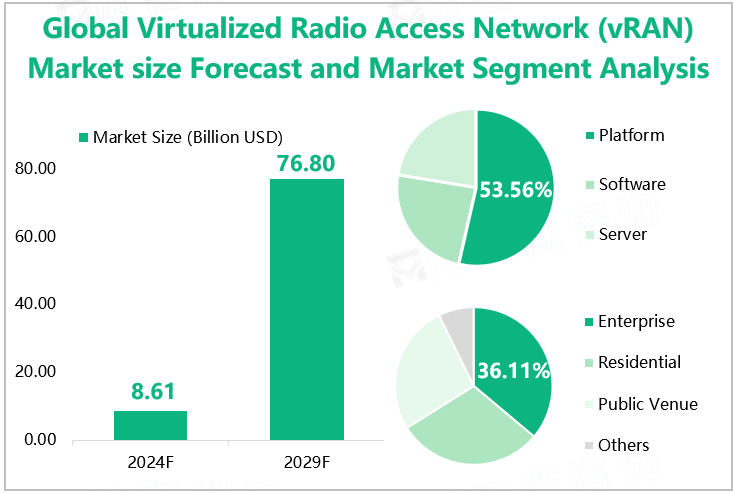Virtual Radio Access Network (vRAN) is the process of virtualizing the functions of traditional remote radio units or base stations and running them on commercial hardware. The vRAN aims to reduce operating costs and improve the performance and scalability of operators towards 5G deployment. It reconstructs mobile networks based on the Network Function Virtualization (NFV) principles of the International Telecommunication Union (ITU), making base stations the least functional wireless units, and sharing and virtualizing baseband, management, and user functions on general-purpose computers the core of operators.
The implementation of vRAN involves separating the functions in the wireless access network from traditional remote radio units or base stations, and running them as virtualized network functions (VNFs) on commodity hardware, thereby improving the flexibility and scalability of the network and adapting to the development trend of multi network coexistence and diversified service demands in future wireless communication networks.
Overview of Market Development
VRANs have become the preferred solution for network upgrades due to their advantages of rapid deployment, dynamic resource allocation, and cost-effectiveness. In recent years, the global vRAN market has experienced significant growth. According to our research data, the estimated global vRAN market size in 2024 is $8.61 billion, an increase of 88.05% compared to 2023. This growth is mainly due to the widespread deployment of 5G networks and the surge in demand for high-capacity, low latency networks.
In the future, with the further popularization of 5G networks, the surge in mobile data traffic, and the strengthening trend of Network Function Virtualization (NFV), this market is expected to continue its rapid growth trend. It is expected that by 2029, the global vRAN market size will increase to $76.80 billion. The CAGR for 2024-2029 is estimated to be 54.89%.
Segmented Market Analysis
In terms of types, the vRAN market can be segmented into platforms, software, and servers. Among them, the platform segment market holds the largest share, estimated at 53.56% in 2024.
From the perspective of downstream users, vRANs are applied in enterprises, residential areas, and public venues. Among them, enterprises occupy the highest market share in downstream applications, with an estimated 36.11% in 2024.
Global Virtualized Radio Access Network (vRAN) Market size Forecast and Market Segment Analysis

Source: www.globalmarketmonitor.com
Market Analysis of Major Regions
From a regional perspective, the global vRAN market is concentrated in three major regions: North America, Europe, and Asia Pacific. Among them, North America is the largest revenue market. Data shows that the estimated revenue of the North American vRAN market in 2024 is $2856 million, and the revenue share is expected to reach 33.15%.
Global vRAN Market Revenue and Market Share by Region Forecast
|
Regions
|
Market Revenue (Million USD)
|
Revenue Share
|
|
North America
|
2856
|
33.15%
|
|
Europe
|
2731
|
31.70%
|
|
Asia Pacific
|
2484
|
28.83%
|
|
South America
|
327
|
3.80%
|
|
Middle East & Africa
|
217
|
2.52%
|
Source: www.globalmarketmonitor.com
For more industry information, please refer to our latest released "2023 Global Virtual radio access network Market Analysis Report, Key Competitors, Market Effect Factors, Growth, And Forecast".
